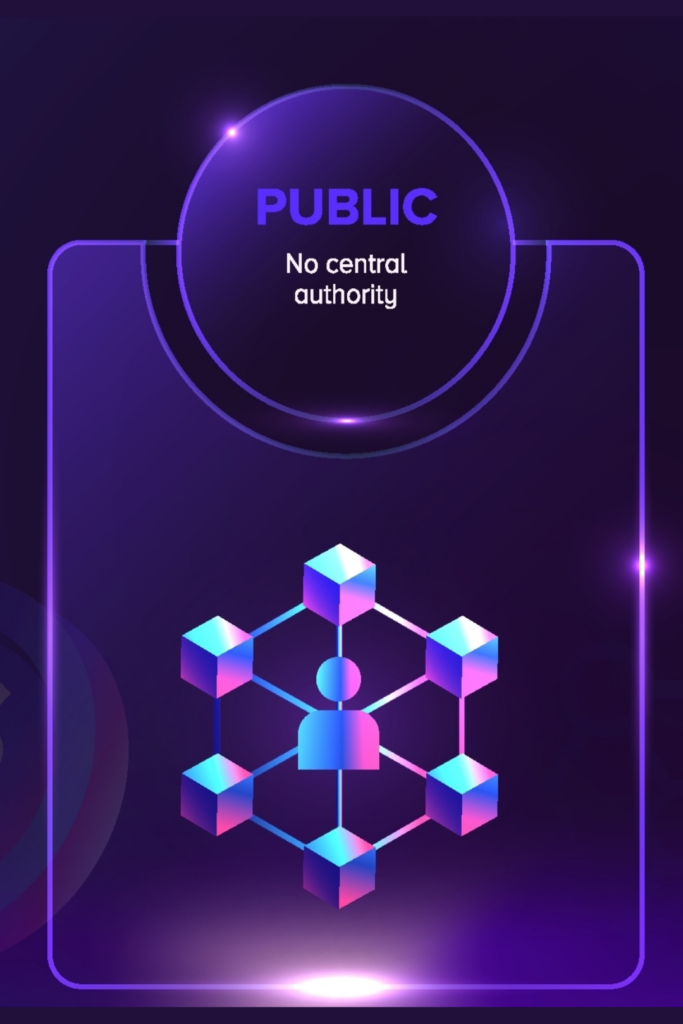Public Vs Private Blockchains: Which is Better?
When we talk about blockchain, we’re usually referring to a public blockchain. It’s what most of the popular cryptocurrencies, like Bitcoin and Ethereum, and DeFi protocols are built on. However, recently, there has been a rise in private blockchain use cases.
Private companies and organizations with a need for blockchain technology go for private blockchains instead of public blockchains.
But why do they do so? And how is public blockchain different from private blockchains? When do people prefer one over the other?
In the following guide on public vs private blockchain, we’ll address all these questions and more.
What is a Public Blockchain?

Public blockchains are decentralized, unregulated and open to everyone. Each user has access to the distributed ledger, where they can read, write and audit the stored data. They stand for transparency, open access, and user empowerment.
Blockchain technology has been around for a long time, but it only got popular, especially public blockchain, with the rise of Bitcoin and the crypto industry as a whole. Hence, when most people talk about the characteristics of blockchain technology, they are usually referring to a public blockchain.
How Do They Work?
A large number of participants form a network across multiple locations all over the world to manage public blockchains. All these users can see the data stored on the public blockchain at all times. There’s no single entity to oversee the network. Instead, all users have an equal amount of power.
Moreover, anyone from anywhere in the world can join the public blockchain.
Applications of Public Blockchain
The applications of public blockchain align with its features: decentralized, unregulated and open to all.
- Cryptocurrencies like Bitcoin are perhaps the best-known use case of public blockchains.
- Authorities can use a public blockchain to maintain public records for sectors like health and property.
- Social support groups and NGOs can use public blockchain since they have relatively less need for privacy than For-profit corporations.
What is a Private Blockchain?

A private blockchain is a partially decentralized blockchain managed by a network administrator that requires users to have permission to access it. They are more efficient since they allow fewer users compared to public blockchains. Plus, they’re more energy efficient as they use eco-friendly consensus algorithms to complete transactions.
In a private blockchain, a central entity regulates all the activities. As a result, it has the power to set the rules and regulations for the blockchain and can also alter the records. Not only that, but the controlling entities can change and delete transactions stored on the ledger as they see fit.
However, these features are necessary to make the most out of private blockchains for their intended use cases, which tend to be in private industries.
How Do They Work?
Only the users invited by the network administrators to be a part of the blockchain can access the data stored in it. These users then must sign up for the network by verifying their identity.
The administrators of private blockchains not only control who gets access to the network but also what they can do once they’re a part of it. For instance, if the blockchain has a mining feature, the administrators can decide who gets to execute the consensus protocol required.
As the name suggests, private blockchains can afford you a level of privacy that public blockchains cannot. Enterprises that want to ensure the data stored on their ledger does not get exposed to their competitors or the general public prefer private blockchain coupled with other advantages.
Applications (Uses) of Private Blockchain
Corporate entities are the most common users of private blockchains, which they prefer over public blockchains due to factors like increased privacy, speed, and control.
- Businesses use private blockchains to improve the efficiency and speed of their workflows.
- Some businesses use it to automate processes.
- Many retailers use private blockchains to track the sources of the materials they receive.
Public Vs Private Blockchains: Which is Better?
It’s hard to say which is better in an overall head-to-head comparison of public vs private blockchain. But we can go over the common traits and features individually and see how these two compare in different areas.
Control
A public blockchain is entirely dependent on its network of nodes to update and manage the ledger. There is no overseeing authority. The users have complete control over it.
Private blockchains, on the other hand, are controlled and regulated by one or more central entities. These entities decide who gets on to the network, what and how much access they have, what functions they perform, etc.
Moreover, administrators of private blockchains can overwrite or even erase transactions on the network as they see fit. Hence, they are only partly immutable.
But when it comes to public blockchains, once a transaction gets updated on the network, there’s no way to edit or delete it. Hence, public blockchains provide complete immutability.
Access
Any participant can read, write and audit the records in public blockchains, which is why they are also called permissionless blockchains. Anyone can join and participate in the ledger.
However, to get access to a private blockchain, one needs permission. Hence, they are called the opposite – permissioned blockchains.
The level of access you get in a private blockchain is dictated by what permissions you have on the network. As mentioned before, one can even change or delete the blocks in a private network. But that power mostly lies with the admins.
Speed
As most public blockchains are managed by countless nodes and have a large user base, it affects the transaction speed, making it relatively slow.
But private blockchains can process transactions much faster since they’re more centralized and have fewer users than a public blockchain.
Cost:
Continuing with the same logic from the last section, since public blockchains have more users, they also have more transaction requests. Hence, it’s slower. This slow pace in handling and processing transactions results in increasing transaction requests and, as a result, increasing costs.
Private blockchains, on the other hand, usually have a limited number of transaction requests, and they’re controlled by a centralized entity, which helps process the transactions faster.
Plus, the transaction fees in private blockchains don’t increase based on the increasing requests. Hence, the cost of performing transactions is lower in private blockchains than in public blockchains.
Final Thoughts:
Public and private blockchains serve two different purposes.
You get more speed, privacy, efficiency, and less consumption of power with a private blockchain, whereas public blockchains are more secure, transparent, accessible, and decentralized.
So a user or organization must choose based on what better serves their needs, and this guide will help you find that out.